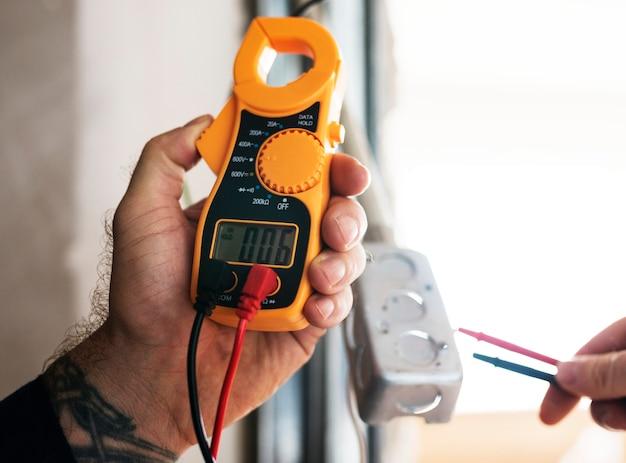Understanding how to test a thermal fuse with a multimeter is a critical skill for anyone involved in appliance repair or maintenance. A thermal fuse acts as a safety device, designed to cut off power to an appliance if it overheats. When a thermal fuse has blown, it prevents potential fire hazards. The big question we’re addressing here is how does one ascertain the integrity of these thermal fuses? This article walks through the process of using a multimeter to test whether your thermal cutoff has failed, ensuring that your appliances, such as dryers, continue operating safely without the risk of overheating.
Tools and Safety Precautions Before You Begin
Before commencing the test, collecting the right tools and adhering to safety measures is paramount. Essential tools include a multimeter capable of testing continuity, a pair of safety gloves to protect from electrical components, and a screwdriver for accessing the fuse within the appliance. Safety precautions start with making sure the appliance is unplugged and has no power running to it. Checking for any other potential hazards that may have been overlooked before you start working is also crucial. The safety of the tester should not be compromised at any stage of this process.

Understanding Your Multimeter
The multimeter is a versatile tool that can measure various electrical properties, but for testing thermal fuses, we’re interested in its continuity setting. This setting will help us determine if the fuse’s circuit is complete (good) or broken (blown). When you set your multimeter to this setting, you’re preparing to verify that electricity can flow through the thermal fuse uninterrupted. Ensure you’re familiar with your multimeter’s manual, as the configuration could vary between different models.
Step-by-Step Guide to Testing a Thermal Fuse
Gaining access to and testing a thermal fuse requires careful attention to detail. The steps below will guide you through the process:
- Identify the location of the thermal fuse on the appliance — it’s often found near the heating element in dryers or other heating appliances.
- Using a screwdriver, carefully remove the panel or cover that houses the thermal fuse.
- Detach the thermal fuse from its wiring, taking note or a photograph of its connections for reassembly.
- Set the multimeter to the continuity test mode.
- Place the multimeter probes on each end of the thermal fuse.
- Observe the multimeter’s response; a continuous beep or a resistance close to zero indicates a functional fuse.
Please note that testing should only be done after ensuring the appliance is completely disconnected from its power source.

Interpreting Results of The Multimeter Test
The results obtained from the multimeter during a continuity test are straightforward. A multimeter that beeps continuously or shows little to no resistance indicates a complete circuit, meaning the thermal fuse is good. On the other hand, if the multimeter does not beep or if the display does not change, the circuit is broken, and the thermal fuse has blown and needs replacing. Knowing what these readings mean will facilitate proper appliance maintenance.
Troubleshooting Common Issues
Sometimes issues may arise during the testing process. Below are troubleshooting tips for some common problems you might encounter:
- If your multimeter does not respond, check that it is set correctly and that the batteries have not run out.
- If inconsistent readings are being achieved, make sure that the probes are making good contact with the thermal fuse terminals.
- In case the readings are still unreliable, there could be an issue with the multimeter itself; attempt using a different one to verify results.
A reliable test is essential for determining the next steps, which could range from reassembling the appliance to replacing the thermal fuse.
Reassembling the Appliance After Testing
Once testing is completed and the status of the thermal fuse is ascertained, the appliance will need to be reassembled. If the thermal fuse is still functioning, ensure it is secured back in its designated place. All other components should be returned to their original positions before the final cover or panel is replaced. Adhering to correct reassembling procedures ensures the appliance is safe for use.

Conclusion
Ultimately, testing a thermal fuse with a multimeter is a straightforward task that, when done correctly, can prevent potential safety hazards in household appliances. Whether the thermal fuse is functional or has blown, taking the right actions following the test is critical. Remember, for any thermal fuse that blows, replacing it with the correct one is non-negotiable for the continued safety and functionality of the appliance.
FAQs
| Question | Answer |
|---|---|
| What if a thermal fuse blows frequently? | If a thermal fuse blows frequently, it may indicate an underlying problem with the appliance, such as improper ventilation or an overheating component. It’s essential to have the appliance thoroughly inspected by a professional to determine the root cause. |
| Can I use any multimeter to test the thermal fuse? | Most multimeters with a continuity setting can be used to test a thermal fuse. Ensure you’re using a reliable and correctly functioning multimeter for accurate results. |
| After replacing a thermal fuse, what should be done next? | After replacing a thermal fuse, you should perform another continuity test to confirm the new fuse is functioning correctly. Additionally, verify that the cause of the original fuse blowing has been addressed before using the appliance again. |
| How can I ensure the right replacement for a blown thermal fuse? | Ensure you obtain a replacement thermal fuse with the same temperature rating and specifications as the original. Consulting the appliance’s manual or manufacturer can provide the needed information. |
| Are there any signs that a thermal fuse may be about to blow? | Yes, some signs that a thermal fuse could soon blow include the appliance consistently running hotter than usual or frequently shutting off during operation. If these signs are present, a preemptive test of the fuse is recommended. |



